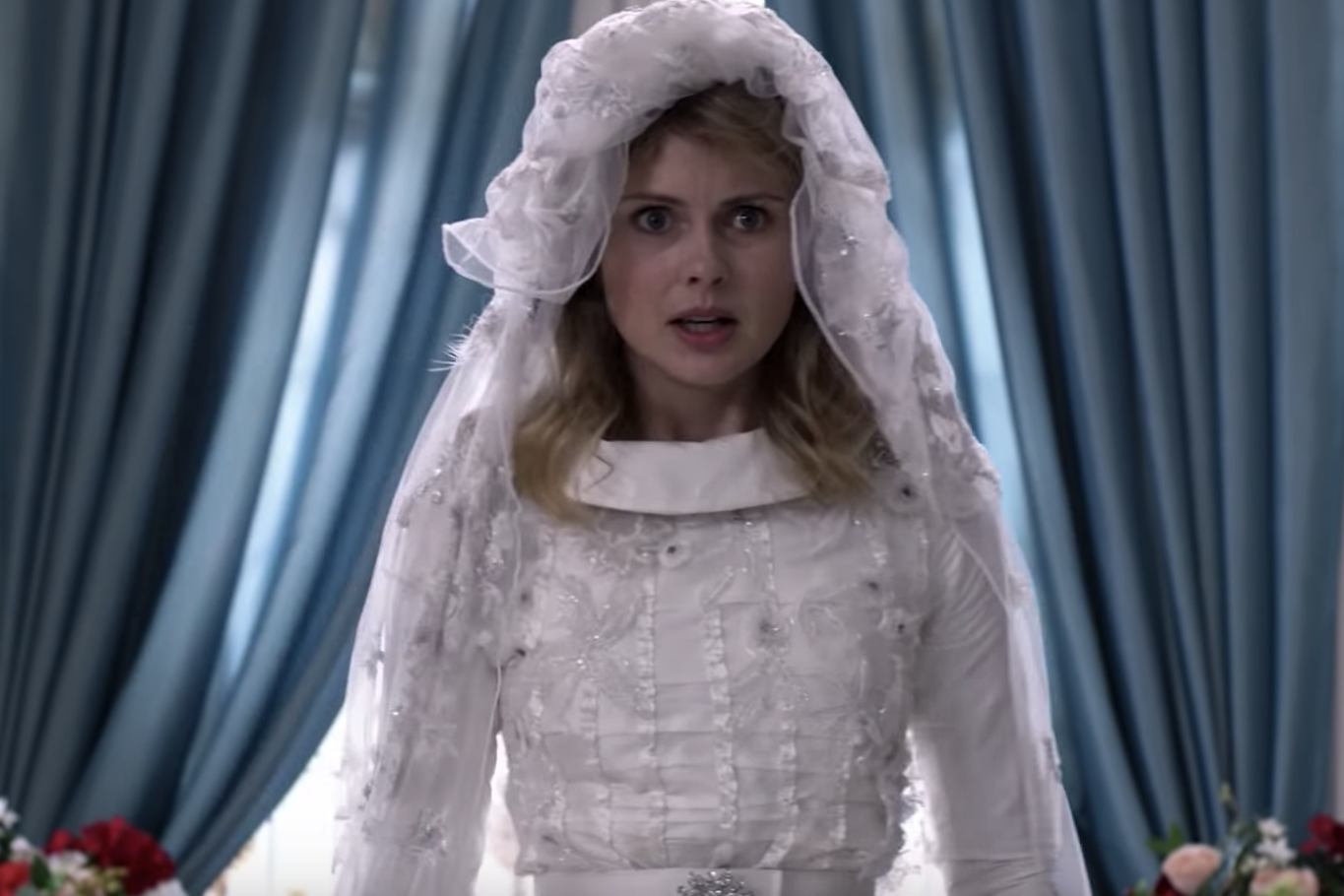‘We own Christmas’: Netflix can’t compete with Hallmark when it comes to the festive romcom
It might draw mockery and lack Netflix's prestige, but Hallmark has found a cheap, fail-safe formula for cosy Christmas movies

Your support helps us to tell the story
From reproductive rights to climate change to Big Tech, The Independent is on the ground when the story is developing. Whether it's investigating the financials of Elon Musk's pro-Trump PAC or producing our latest documentary, 'The A Word', which shines a light on the American women fighting for reproductive rights, we know how important it is to parse out the facts from the messaging.
At such a critical moment in US history, we need reporters on the ground. Your donation allows us to keep sending journalists to speak to both sides of the story.
The Independent is trusted by Americans across the entire political spectrum. And unlike many other quality news outlets, we choose not to lock Americans out of our reporting and analysis with paywalls. We believe quality journalism should be available to everyone, paid for by those who can afford it.
Your support makes all the difference.In late 2017, Netflix released A Christmas Prince, a romantic comedy so popular it spawned two sequels, memes and a jokey, if ominous, tweet from the company: “To the 53 people who’ve watched A Christmas Prince every day for the past 18 days: Who hurt you?”
The appetite for sappy, seasonal content appears endless. The platform’s 2018 festive film, The Christmas Chronicles, attracted 20 million streams in its opening week. For 2019, Netflix has planned accordingly. As well as A Christmas Prince: The Royal Baby, productions such as The Knight Before Christmas, Holiday in the Wild, Let It Snow, Klaus and Home For Christmas will all premiere before the year’s end. Yet for all its spending, Netflix hasn’t a hope of cornering the Christmas romcom market. For now, that remains entirely Hallmark’s domain.
Hallmark lacks Netflix’s prestige. But during Christmas 2017, approximately 82 million people watched one of the channel’s Christmas romantic comedies. The vast majority of these offerings have the same structure: a workaholic woman, trapped in a corporate city job, is forced to return to her childhood home. This is usually in a small, rural town. There may be a farm involved. There will certainly be a former sweetheart or perhaps a charming widower to be wooed. There will be snow, carols and a beautiful church. The couple may be married by the end of the film. Sex is never, ever, mentioned; the main pair will kiss chastely while declaring their love. If it’s a particularly racy production, they may hold hands. Hallmark will release 40 such films this year, from late October to the end of December.
“We own Christmas,” Michelle Vicary, Hallmark’s executive Vice President of programming told E Online in 2017. “We are going to do it in a bigger way and a better way and really speak to the spirit of the season that I don’t think any of our competitors do.”
The rote predictability of Hallmark’s offerings draws mockery but the promise of a happy ending is part of the company’s charm. Bob Abbott, Hallmark’s CEO, has described the channel as a “safe space, a feel-good space” in an industry that is “past the point of edgy”. His channel’s fictional couples don’t encounter lasting obstacles on the path to true love. Hawking happiness isn’t a novel concept, but it is appealing – the cinematic equivalent of comfort food.
Hallmark views Lifetime as its biggest competitor, but the company has noted Netflix’s pivot to Christmas. “Netflix is investing quite a bit of money in content,” Mr Abbott said in 2018, according to The Hollywood Reporter.
“There’s no question that they’re a huge competitor. And they’ve had a lot of success. But we believe that the way we create our content and the way we brand our experience is a completely different proposition.”
Hallmark can afford to be blase; for one thing, it has far lower production costs than Netflix. It’s wise not to look too closely at the background of a Hallmark film. The fake snow and the kitschy small towns don’t quite hold up under scrutiny.
Hallmark spends roughly $2m per film, relatively little in today’s industry. In 2018, it brought in $390m in advertising revenue, according to S&P Global Market. Netflix, in contrast, spent $15bn on content in 2019. Its funding is famously debt fuelled, a strategy which allowed it to dominate the streaming wars. But such high budgets mean it can’t match the number of films Hallmark churns out.
“We believe that [Hallmark] can make a great movie for a certain amount, and we don’t need to spend double, triple or quadruple to make it high quality,” Mr Abbott said.
What Hallmark notably lacks is the social cachet of Netflix. Viewers of A Christmas Prince flocked online to lovingly discuss the film’s absurdity. The story, about an aspiring journalist who somehow meets and then somehow marries a European royal, inspired a satirical piece in The New Yorker. Though it is indistinguishable from a Hallmark production, the film was met with good humour instead of mockery.
Bill Abbott has described the tendency to ignore Hallmark “very frustrating” for executives. “A vast majority of TV’s creative people are in Los Angeles and some in New York,” he told the Los Angeles Times. “The sensibility is very different there than it is in places where we are particularly successful.”
Hallmark’s success is built away from the coasts. Its viewers are in the Midwest and the south. The channel’s average viewer is around 58 years old. If the company isn’t too worried by Netflix, that may be because the brands are targeting wildly different demographics.
Still, the channel has attracted criticism for its lack of diversity. And the traditional values Hallmark is beloved for in some parts of the US have made the brand a target for criticism in other regions.

While Mr Abbott says the company is taking steps to diversify Hallmark’s largely white casts, other messages remain woven into plots. Rural environments are preferred to urban ones. Those who prioritise career over family have lost their way. LGBT+ people don’t exist. Your first love should, ideally, be your last.
“I’m waiting for a reverse Hallmark Christmas movie about a small-town girl who realises her community’s politics are terrible, moves to Manhattan, gets a high pressure office job, meets a businessman, and they host a non-denominational holiday party at their penthouse,” tweeted Jennifer Wright, political editor at Harper’s Bazaar, in 2018. More than 100,000 people liked the post.
Despite such controversy, there seems no end in sight to Hallmark’s rise. Last month, the channel announced it was sponsoring a three day long “Christmas Con” in New Jersey. Fans of the company will gather from 8 November to meet its top billed stars. Tickets sold out promptly, crowds drawn by the promise of seeing the fairytale in the flesh. There will be other events, at carefully chosen small towns across the US. In the official press release, Bill Abbott said each chosen town was a “holiday-haven worthy of a Hallmark movie.”
If anything, the competition from other networks has only increased Hallmark’s determination to flood the Christmas television market. Netflix and Lifetime are struggling to keep up, but keep churning out their own sanitised films, mostly pale imitations of Hallmark originals. Viewers are left with more films than a person could ever watch in a season, yet with precious little quality to choose from.
Perhaps this is how the year ends now; not with fireworks but in a corporate race to the bottom, in the quest to mass produce charm.
Join our commenting forum
Join thought-provoking conversations, follow other Independent readers and see their replies
Comments